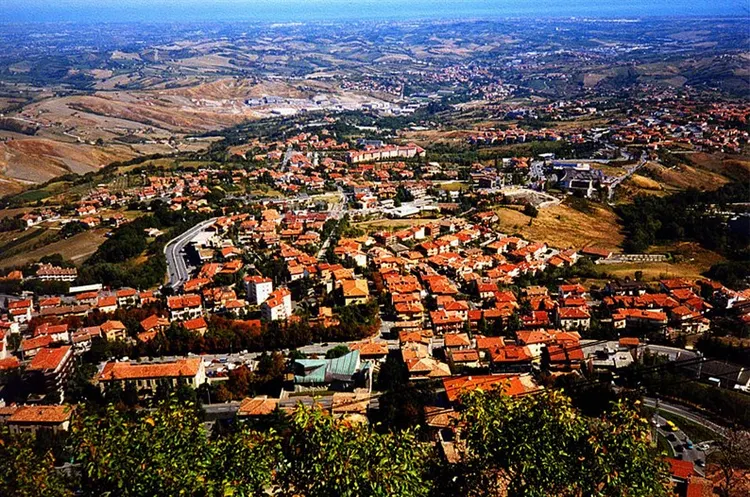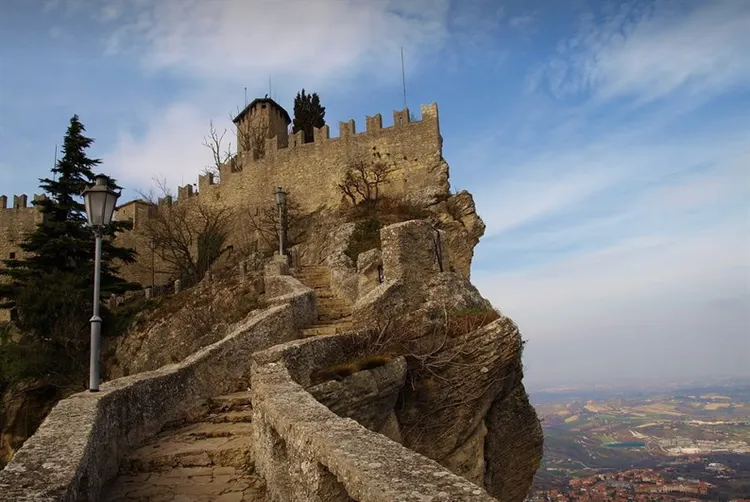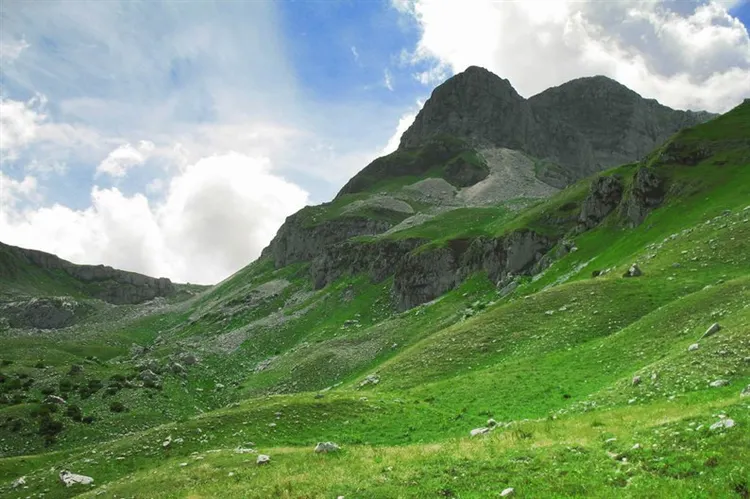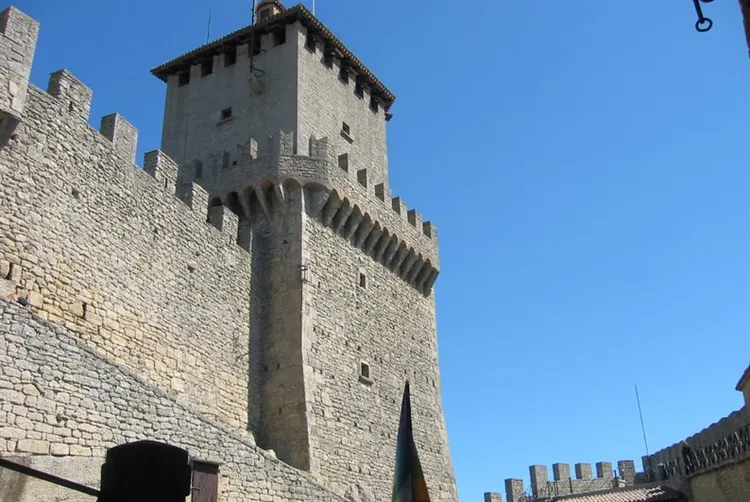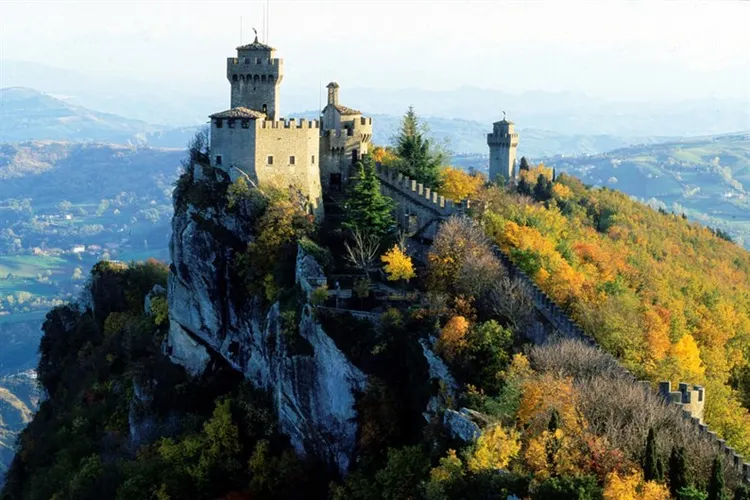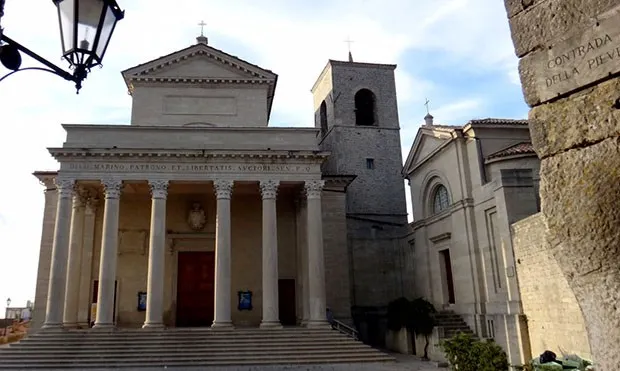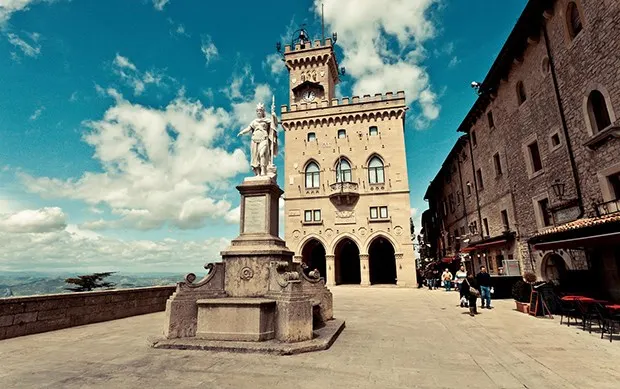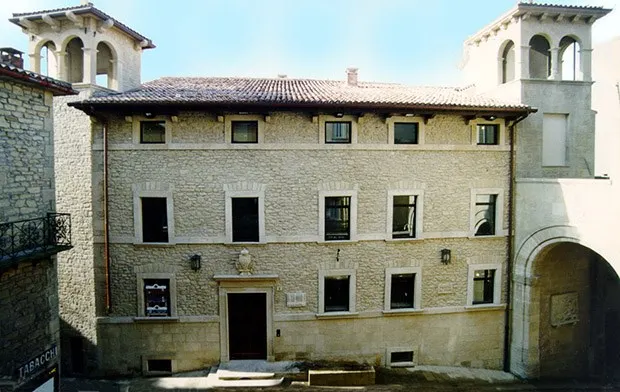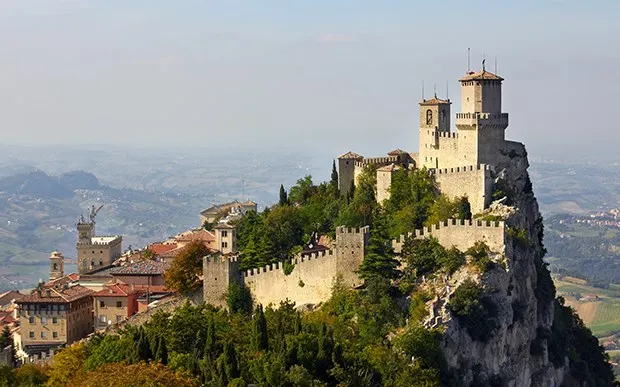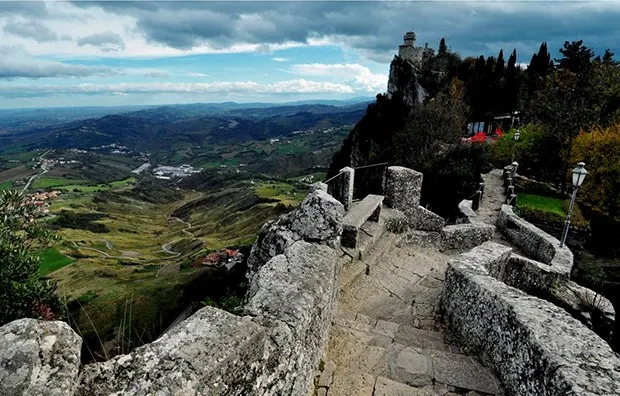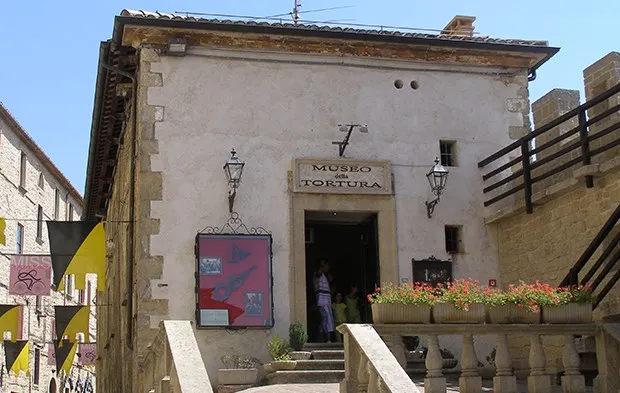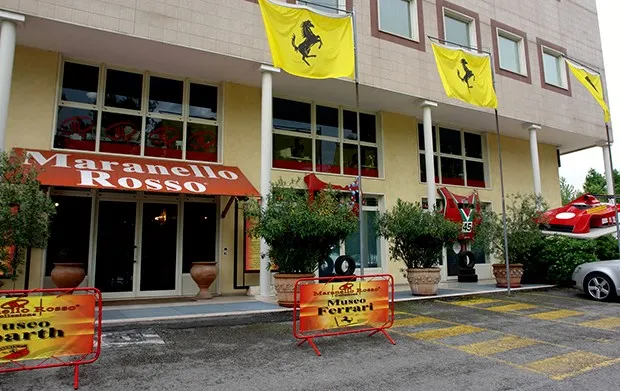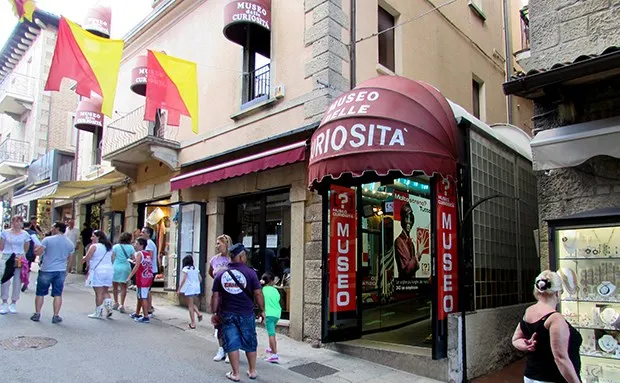9 best sights of San Marino – photo with names and descriptions, map of what to see in San Marino
The history of one of the smallest states, which is San Marino, has more than seventeen hundred years. It is located on Mount Titano and has been attracting thousands of tourists for many years due to the abundance of architectural monuments, historical sights and shops with affordable prices. As for the last point, indeed, this republic belongs to a free trade zone, so the abundance of shops and buyers also have a positive effect on the country's economy. You can get from the nearest Italian city of Rimini. You can travel twenty-five kilometers by bus or by renting a car. The borders are rather weakly guarded, so you can cross them without being noticed. We will tell you about the most interesting sights of San Marino.
Story
There is a legend according to which in 301, the exemplary Christian Marino, hiding from the pagans, found refuge on Mount Titano. Thanks to his wisdom and justice, he acquired the glory of a Holy Man, to whom other representatives of this religion began to come. Many remained to live here, and soon formed a Christian community, choosing Marino as a deacon, for which the approval of the Bishop of Rimini was given. Donna Felicissima, who owned these lands, was imbued with sympathy for these people and gave them a rock. But the founding moment of the free and proud Republic of San Marino is considered to be 855, when it received the official status of an independent state.
Constant numerous raids were the basis for the construction of fortress walls. For many years, the inhabitants of the republic fought back not only military units, but also the Italian church, led by the Pope. However, in 1461, the attack of the Malates family, then ruling in Rimini, put an end to these differences. The rulers of San Marino entered into an agreement to create an alliance with the great Roman church, which helped them win the war against the invaders and annex their possessions. This was the only and last territorial change in the borders of the republic.
Since then, all attempts to conquer this free people and seize their lands have failed. The inhabitants also supported the independence of Italy by fighting as volunteers during the war of 1915–1918. During the Second World War, the state remained neutral and provided asylum to refugees from a neighboring country. An interesting fact was that the defensive walls of San Marino, having withstood numerous attacks by enemies, suffered the most from the inhabitants of the country themselves, who began to dismantle them to build their houses. Fortunately, the wise rulers realized in time that tourism in their state could be made the main source of income, and they banned the destruction of historical monuments.
However, by that time most of the fortification walls had already been dismantled, and at the moment you can only see a fragment of the first belt, which is a wall connecting the tower called Torrione and the two gates of San Francesco and della Rupe. The section of the second belt, which runs between the Fratta tower and the Cava Antica site, was also restored, as well as the wall between the fortress of Montale and Fratta, which were previously part of the third belt.
The territory of the entire state is divided into nine regions, but tourists are invited to start their tour from the city of San Marino, which is considered the main historical center and capital of the republic. In terms of the number of attractions, San Marino, perhaps, comes out on top in the world. You can order a three-hour city tour, the cost of which is $50. During this time, you can see the three Freedom Towers, interconnected by galleries, from which you can see not only the Padana Plain and the Apennine Mountains, but even Venice. The price includes admission to the Arms Museum and the Ferrari Museum. The rest of the time you can walk along the small streets of the capital, accompanied by a guide who tells about the history of this region. Acquaintance with the sights of San Marino begins with the first steps, that is, from the gates of San Francesco, on which the inscription has been preserved,
Towers of San Marino
The main historical monuments of the capital are the towers of the city fortress. These include:
Guaita is considered the oldest, built in the sixth century and serving as an observation post. This building is located on a rock, as a result of which it does not have a foundation. As other fortresses were built, its functional purpose changed, and Guaita became a local prison. Now it houses the Museum of the Guards and the Artillery Museum.
The next tower of Chesta appeared already in the fourteenth century and also served as an excellent protection for observers. In 1956, it was restored and is now used as a museum of weapons, which contains more than seven hundred copies. Montale, which is the next tower, was built in the fourteenth century. At the moment, entry into it is prohibited.
Basilica of San Marino
Built in the early 19th century on the site of an ancient church. Decorated with masterpieces of painting and sculpture, the basilica dates back to the 4th century. The construction of the new temple lasted 12 years under the guidance of a visiting architect from Bologna. The main altar, under which the relics of St. Mariino, the founder of the state, rest, is crowned with a marble statue of him, and the Corinthian columns give special solemnity to the basilica hall.
The temple is made in the neoclassical style and consists of three naves with seven altars located in their semicircles. All solemn state and religious events are held here. The main temple of the country serves as a venue for concerts and performances, in particular, the Autumn Music Festival is held here annually. Address: Domus Plebis Square near Palazzo Publico. Worship services are held on weekends from 11 a.m.
Gallery of contemporary art
Located in a medieval city, among the fortress walls and towers on the mountainside, the modern art museum keeps an exposition of the new time. The collection of new art has settled in the San Marino Gallery since 1956. The first exhibition was marked by the appearance of the Italian master Renato Guttuso and an exhibition of 500 artworks. Since then, the gallery has exhibited works of Italian and foreign art of the 20th century and fresh works of various artistic movements, divided into sections. There are halls of photography, watercolor and oil painting, graphics and sculpture.
The works of young contemporary masters of painting and photography are housed in the former church of St. Anne, where annual exhibitions are held. The hall of contemporary photography is famous for world names and works of unrecognized amateur geniuses. The gallery attracts both curious visitors and connoisseurs of contemporary art.
Address: Via Eguippo. Opening hours: from January to June: from 9 to 17, from June to mid-September: from 8 to 20, September 14 to January from 9 to 17. Admission fee: 3 euros.
State Museum of San Marino
Five thousand historical, archaeological and artistic exhibits are stored in this museum on four floors of the building, opened with donations from citizens in the late 19th century. The museum received autonomy in 1982, when it was transferred to the current building of the Palazzo on the main square of the country. A rich collection of archaeological research covers the period from the Neolithic to the Middle Ages. Here you can see finds-donations from ancient civilizations: the Etruscans, Egyptians, Romans, among which household items and jewelry are of the greatest interest. The numismatics section introduces ancient medals and coins, and the art section is famous for the works of the sculptor Stefano Galletti, the 17th century painters Pompeo Batoni and Elisabeth Sirani, and icons.
Address: pl. Titano, Palace of Pergami-Beluzzi. Opening hours: from January to June from 9 to 17, June 8 – September 13 from 8 to 20, from September 14 to January from 9 to 17. Admission fee: 3 euros.
Monte Titano in San Marino
The limestone mountain, on which the founder and Saint Marino found refuge, is the most striking attraction of the most ancient European state. It has three peaks, on which three majestic tower fortresses rise: Prima Torre (Guaita), Cesta and Montale and forms the historical center of the city. The most representative and ancient of them – Guaita appeared here in the 11th century. The main tower is an impregnable bastion. It hangs over a dizzying cliff and is fortified with two rows of walls.
The stone castle was home to the first inhabitants of San Marino. A long period in the history of its wall was chosen by a prison. The guns donated by the Italian kings are stored here, which are loaded with blank charges, announcing national celebrations. The tower today is a popular tourist attraction, since it offers a stunning panorama of the city and its surroundings, it still looks menacing. The fortress contains a small collection of paintings dedicated to the problems of modern society.
The cesta was built somewhat later and dates from the first half of the 13th century. The second tower has undergone repeated restoration. The castle stands on the highest point of Monte Titano and is famous for its collection of cold and small arms, numbering 500 copies. Every year, San Marino hosts a medieval festival that allows residents to travel back in time. The third fortress – Montale – belongs to the 13th century, as well as the second. The watchtower is pentagonal in shape and provides excellent viewing opportunities, but entry is limited. It is possible to admire the fortification only from the outside. All three towers are connected by a network of roads through winding hills.
Museum of Torture Instruments in San Marino
The museum presents to the attention of fearless visitors the methods of struggle and tools of medieval inquisitors with dissidents. Seeing the 100-piece horror display, it is impossible to imagine that violence was "common" in the Middle Ages. An iron maiden, a spiked chair, steel "cat's claws", knee crushers, a Spanish boot – an incomplete list of tools that were used to kill a person, brutally torture and cause unbearable pain.
Among the exhibits, an impressive part is occupied by devices for women who were punished by male inquisitors for any offense. Each exhibit is accompanied by a plate with a detailed description of the use of the tool or a photograph for a real idea of u200bu200bits action. The items were reconstructed from images and descriptions in the 19th-20th centuries, some of them have been preserved from the 15th-16th centuries. The museum regularly holds thematic exhibitions that tell about the activities of the Inquisition in different regions.
Address: Porta San Francesco. Admission fee: for adults – 8 euros, for children from 4 to 10 years old – 6 euros. Opening hours: January-February from 10-18, March-December from 10-19, August from 10-20.
Maranello Rosso Collection
The collection is dedicated to the cars of the Italian brand Ferrari and racing designs created by Karl Abarth and consists of two museum sites. The first presents 250 samples of the best cars in Italy, one of which belonged to Marilyn Monroe, introduces the stages of production and the evolution of technology. The second hall contains 40 serial copies of Scorpion sports and racing cars from Abart and is dedicated to the designer's biography. An exclusive offer of the Ferrari Museum is to order a test drive.
Address: Strada dei Sensiti, 21. Opening hours: 10:00-13:00 and 14:00-18:00, Sat. and Sunday by agreement. Museum entry fee: €12 for the Ferrari Museum and €12 for the Abarth Museum.
Museum of Curiosities
This museum is famous for its huge collection of non-standard items brought from different places on the planet and belonging to different time periods. Museum exhibits will interest both adult and children's audiences. In the halls, divided by theme, you can see the real life stories of people whose existence is almost impossible to believe if these data were not confirmed by the Guinness Book. Here, there is the thickest and tallest representative of the earthly race in the world, you can measure the wasp waist in the literal sense of the word, with a model girl and sizes with a dwarf woman, enjoy the old hairstyles of fashionistas. The zoological sector will introduce giant cancers and an ancient bird's egg, 80 cm high
Address: Salita ala Rossa, 26. The cost of visiting the museum: adult – 7 euros, children – 4 euros
Opening hours: daily from 10:00 to 18:00, except July and August: from 9:00 to 20:00 (depending on the season, the opening hours may vary)
Tourism.com.de recommends the following hotels in San Marino:
